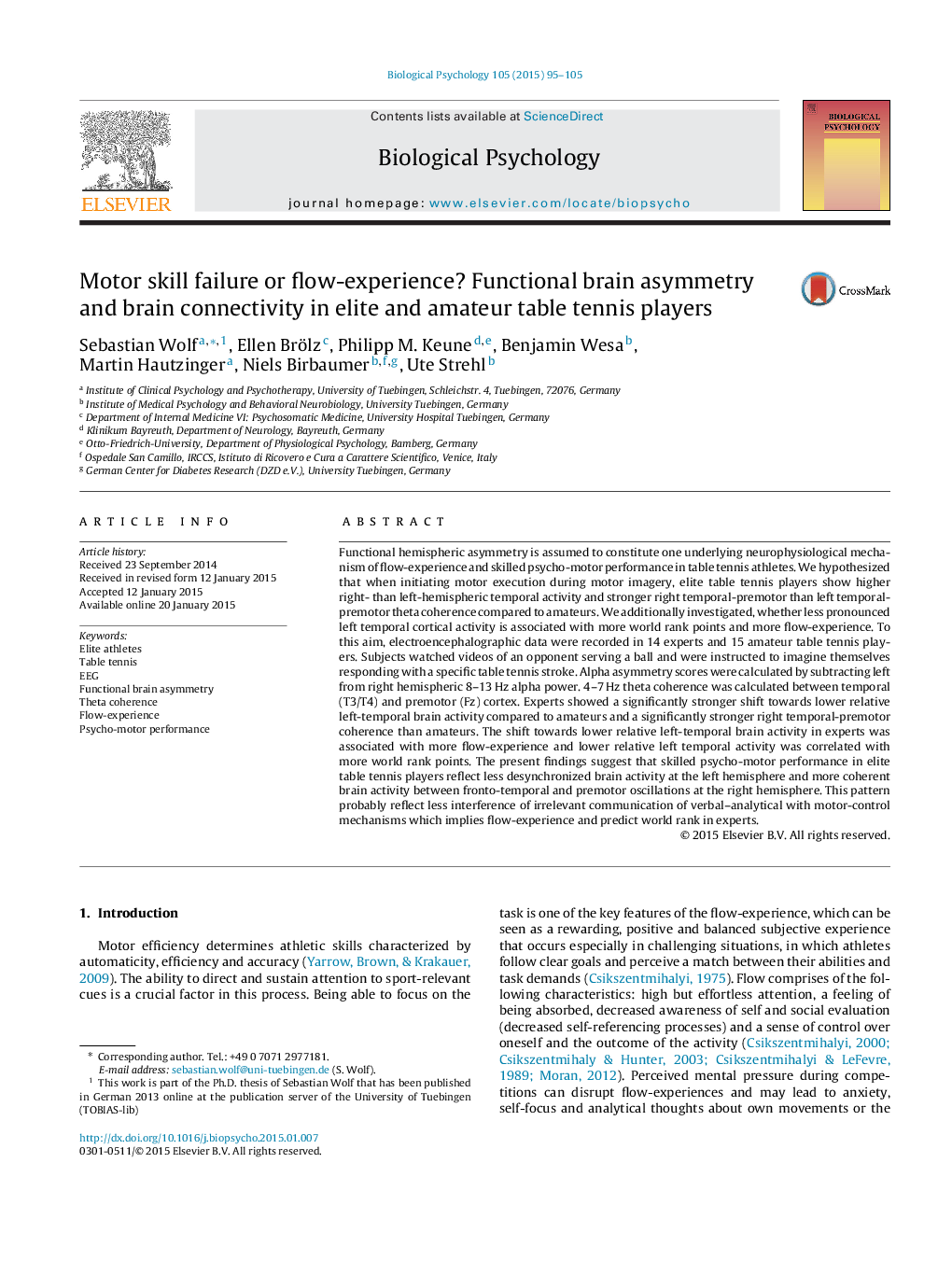| Article ID | Journal | Published Year | Pages | File Type |
|---|---|---|---|---|
| 920876 | Biological Psychology | 2015 | 11 Pages |
•Psycho-motor performance in table tennis is characterized by functional hemispheric asymmetry•Elite expert table tennis players show stronger cortico-cortical communication between right-temporal and premotor areas compared to amateurs•Less desynchronized brain activity at the left hemisphere predicts world rank points and flow-experience in expert table tennis players•The results might be a basis to develop a neuro-feedback training protocol to enhance flow-experience and performance in elite table tennis athletes
Functional hemispheric asymmetry is assumed to constitute one underlying neurophysiological mechanism of flow-experience and skilled psycho-motor performance in table tennis athletes. We hypothesized that when initiating motor execution during motor imagery, elite table tennis players show higher right- than left-hemispheric temporal activity and stronger right temporal-premotor than left temporal-premotor theta coherence compared to amateurs. We additionally investigated, whether less pronounced left temporal cortical activity is associated with more world rank points and more flow-experience. To this aim, electroencephalographic data were recorded in 14 experts and 15 amateur table tennis players. Subjects watched videos of an opponent serving a ball and were instructed to imagine themselves responding with a specific table tennis stroke. Alpha asymmetry scores were calculated by subtracting left from right hemispheric 8–13 Hz alpha power. 4–7 Hz theta coherence was calculated between temporal (T3/T4) and premotor (Fz) cortex. Experts showed a significantly stronger shift towards lower relative left-temporal brain activity compared to amateurs and a significantly stronger right temporal-premotor coherence than amateurs. The shift towards lower relative left-temporal brain activity in experts was associated with more flow-experience and lower relative left temporal activity was correlated with more world rank points. The present findings suggest that skilled psycho-motor performance in elite table tennis players reflect less desynchronized brain activity at the left hemisphere and more coherent brain activity between fronto-temporal and premotor oscillations at the right hemisphere. This pattern probably reflect less interference of irrelevant communication of verbal–analytical with motor-control mechanisms which implies flow-experience and predict world rank in experts.
